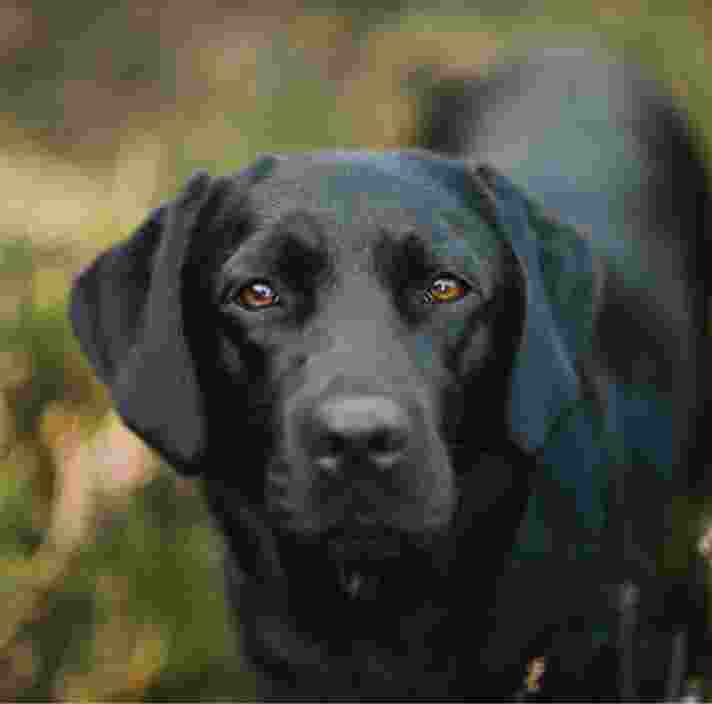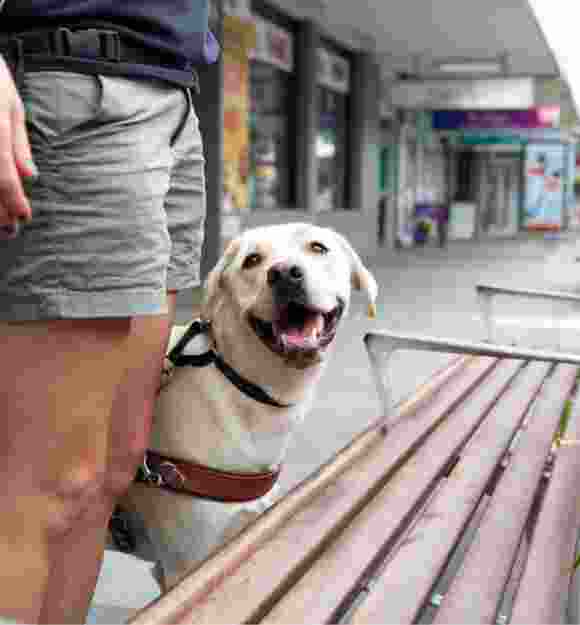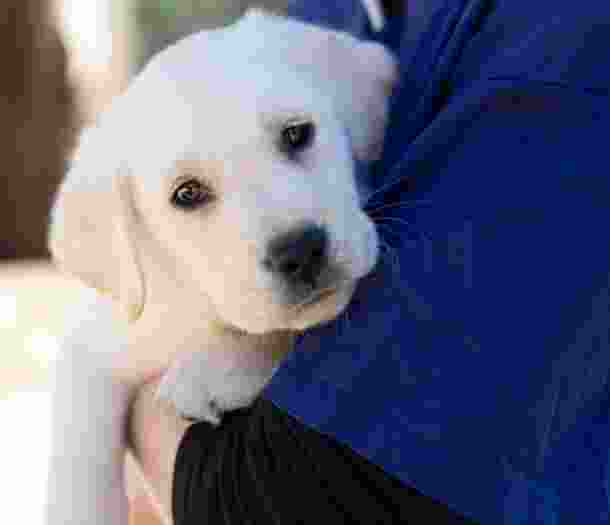On this page:
Pets and retired dogs
Our dogs can follow different career paths.
While Guide Dogs play a life-changing role in supporting people with blindness and low vision, many of our dogs continue to offer the same safety, support and companionship after they change careers.
These dogs are called ‘retired’ or ‘career change dogs’: that is, those who have finished their time as working Guide Dogs, and dogs with unique personalities or other traits that mean they haven’t fully graduated from their Guide Dog training.
Career change dogs are paired mostly with people who are already receiving services or supports from Guide Dogs. With their calming presence and unique training, career change dogs can bring a sense of support and friendship to both individuals and families. They also offer the benefit of encouraging regular exercise through walking and playing.
Retired Dogs can make wonderful pets when there’s a perfect match between each dog and their new forever-family.

Applying for a retired dog
Find out if you meet the criteria for a career-change dog.
If you apply for a retired dog, there are some important details to consider, including:
- Supply fluctuates and demand is high, so waiting times can be lengthy.
- When a dog becomes available, the entire waiting list is examined to find the best possible match between the dog and the applicant. We also consider lifestyle, location, experience with Guide or Autism Assistance Dogs and more.
- We only place our dogs in a home where they will have human companionship for most of the day; this includes living and sleeping inside as part of the family.
- You will be given an opportunity to meet any dog offered to you before purchasing, and in most cases, a two-week trial period is provided.
If you have any further questions, please contact our Client Services team:
Legal access rights
‘Access Rights’ mean that everyone can participate in our community equally.
It’s having a shared ability to go where you want, when you want, and providing the same experience for people of all ages, lifestyles and abilities.
If you’re a person with blindness or low vision, or a child with autism, your rights are protected by three key pieces of legislation:
- Disability Discrimination Act, 1992
- Equal Opportunity Act, SA 1984
- Dog and Cat Management Act, SA 1995

This means accredited assistance animals – including Guide Dogs and Assistance Dogs – are legally allowed into all public places in South Australia. This includes:
- Public transport (including taxis and ride shares)
- Shops and supermarkets
- Cafés and restaurants
- Pubs and clubs
- Hotels and motels
- Hospitals.
For more information on your legal access rights, please refer to the Australian Human Rights Commission.
Service Dog etiquette
How to approach a person with a Service Dog.
Our Service Dogs, including Guide Dogs, Assistance Dogs and Facility Dogs, take on special responsibilities whenever they are matched with a person with low vision, blindness or other specialised support need.
If a Guide Dog is wearing a harness, or an Assistance Dog or Facility Dog is wearing a coat (jacket), they are working. When you see a Service Dog in a harness or coat, they should not be:
- Patted
- Fed or rewarded
- Distracted in any way.
Any of these behaviours could cause the Service Dog to lose concentration and put them and their handler at risk.
Other tips to keep in mind when you see a Service Dog in the community include:
- Always talk to the handler, not the dog.
- Keep your own dog on a lead in public places, and away from the Service Dog, to keep them from distracting or interacting with the Service Dog.
- Try to avoid providing any training tips to the handler of the working dog. The handler with a Guide Dog or Assistance Dog has been trained in the most appropriate techniques for working with their dog.
- Aid only if the person with a Service Dog asks you to do so. You can of course ask the person politely if they would like some assistance.
Guide Dogs and Assistance Dogs trained by Guide Dogs SA/NT can be identified by the below logo on their harness or coat.

When working, these dogs have the same rights as their handlers to enter a premises or transport. For more information on their rights, please see our Legal Access Rights section.
Learn more about best-practice techniques for assisting a person with blindness in the community, or learn more about our Service Dogs.
Ready to continue?
Seems like you have filled this form earlier. Let’s pick up where you left off.

